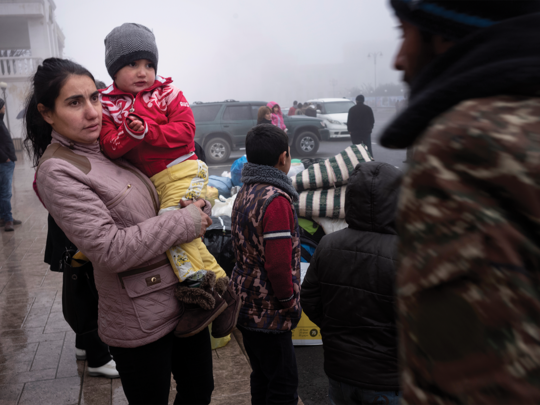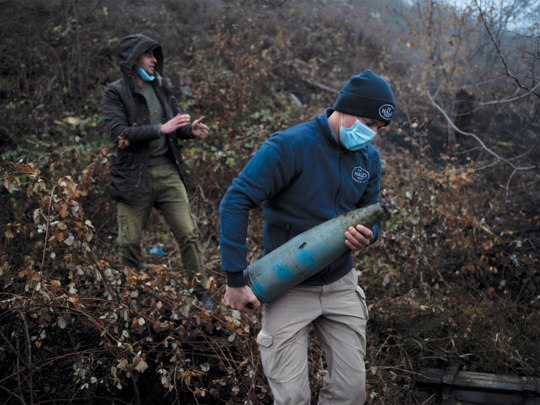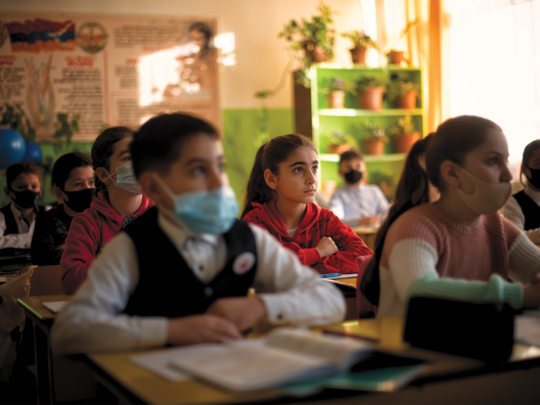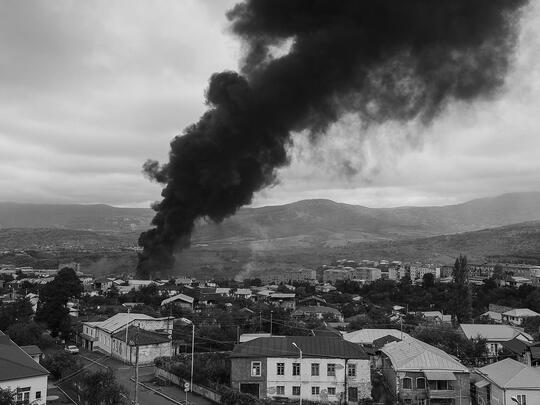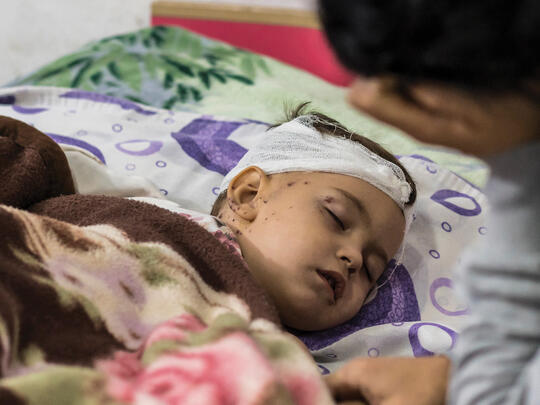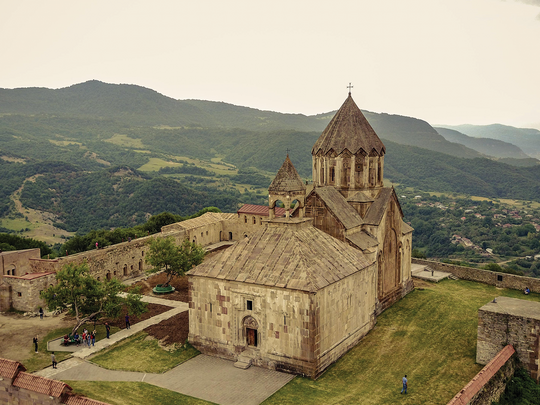In the closing weeks of 2020, while much of Artsakh remained empty, life was once again entering the streets of the capital, Stepanakert. Heaps of shattered glass were swept up in alleyways, shops were reopening, neat rows of children's clothing hung across courtyards, and busloads of families were returning. Many, having lost their homes in Shushi, Hadrut or Karvachar, were making a bid to resettle in Stepanakert, maybe permanently. Still nothing is clear. Nobody knows what tomorrow will bring.
While the return of life to the streets of Stepanakert is heartening, Artsakh is reeling in the aftermath of the war. Sidewalks are covered with pockmarks that look like cascading fireworks, the scars of detonated cluster bombs. Out of context, they might be considered beautiful. But there is no escaping the context, the gravity of the moment. Tens of thousands have been permanently displaced. Those who can return home fear for their safety. With the looming threat of continued attacks, ruined infrastructure, political turmoil, economic devastation, and unexploded ordnance (UXO)—including rockets, warheads, and cluster munitions—scattered throughout residential areas, it’s not hard to understand why.
Thirteen kilometers from Stepanakert, just outside the village of Aygestan, a major ammunition depot was destroyed in early October by an Azeri strike. “First we heard the drones,” recalls Marine Sargsyan, a teacher at the Aygestan school, “then the rockets started. And we knew it was the depot. We went down to the cellar. The explosions went on for two hours and fifteen minutes. The sound was deafening. The doors and the windows of the cellar got blown out. We thought it was the end of us.”
The depot buildings are burned to the ground. The remnants of the blast—rockets, warheads, cannon rounds, and other munitions, some still fused—are scattered as far as the eye can see and beyond, for at least a four-kilometer radius. The HALO Trust, which has been active in Artsakh since 2000—clearing landmines and UXO from the war in the 1990s—is hard at work in the aftermath of this recent war. They are beginning the clearance and safe disposal of explosives across Artsakh, prioritizing the worst hit and most densely populated areas, like Aygestan. In addition to HALO, Russian peacekeepers and emergency services crews are carrying out some degree of UXO clearance, but it will take an immense amount of time and resources to clear this site alone.






